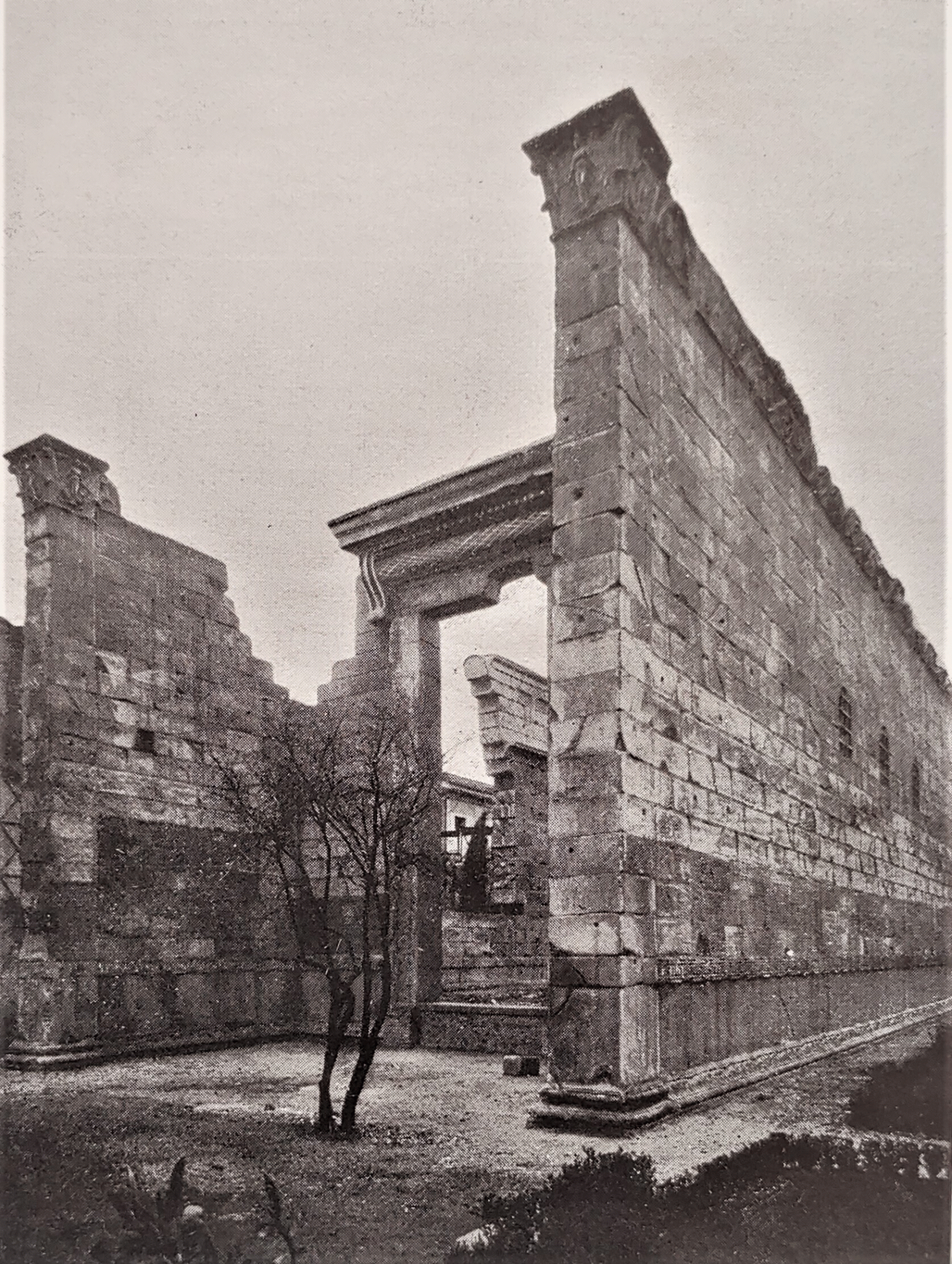Forschung
Archaeology on the threshold of the Italo-Turkish war.
Scholarly and diplomatic dynamics behind the 1910 Italian archaeological mission at Ankara.
Ketty Iannantuono | Doktorandin, KHI-ANAMED Fellow

In the early days of the twentieth century, the relationship between the expanding Italian Empire and the fading Ottoman one hastily deteriorated. Political tensions bubbled up out of Italian colonial claims on territories under Ottoman rule, such as Libya, the Dodecanese islands, and the Balkans. Ancient Roman imperialism was mythicized as a supposed legitimizing precedent, and Italian archaeology in the Mediterranean gained momentum.
Just one year before the ultimate outburst of the Italo-Turkish war (1911-2), the Museo Nazionale Romano funded an archaeological mission aimed the production in situ of a 1:1 plaster-cast copy of the temple of Augustus and Roma at Ancyra, present-day Ankara. Such reconstruction was unprecedented and of great relevance for the academic community: the temple features the best-preserved attestation of the Res Gestae Divi Augusti, the ‘Queen of Inscriptions’. Besides its scientific value, the mission had strong ideological scopes. The casts of the temple were produced to be displayed at the Mostra Archeologica, an exhibition held at the Baths of Diocletian in Rome on the occasion of the fiftieth anniversary of the unification of Italy, in 1911. Within the nationalistic frame of the Mostra, the temple was staged as an example of the vast reach of Italy’s heritage and political prospects.
The project pursues three aims: to reconstruct the story of the Italian mission in Ankar; to shed light on the scholarly and diplomatic entanglements behind early twentieth-century Italian archaeological activities in the Mediterranean; to open up new perspectives on Italo-Turkish cultural and political contacts in the early twentieth century.


